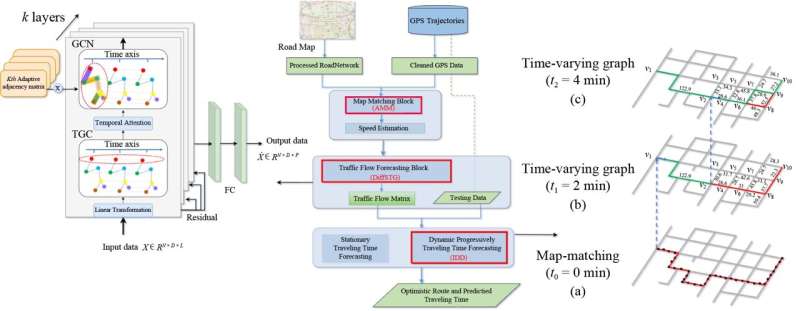Framework of DTT-STG. Credit: Frontiers of Computer Science (2023). DOI: 10.1007/s11704-023-2704-x
Traveling time forecasting, the core component in GPS navigation systems and taxi-hailing apps, has attracted widespread attention. Existing research mostly focuses on independent points like traffic flow prediction or route planning, which ignore globality and lack satisfactory dynamic progress to adopt sophisticated traffic conditions.
To address these limitations, a research team led by Fangshu Chen published their new research on in Frontiers of Computer Science.
The team proposed a novel dynamic routing planning framework DTT-STG integrated with map-matching, road speed forecasting, and route planning with full consideration of the dynamic spatial and temporal dependency.
DTT-STG designs an angle-based map-matching algorithm to describe the direction of vehicles and explores a self-adaptive adjacency matrix combined with diffusion convolution and attention mechanisms to capture the dynamically changing spatial-temporal dependencies. Afterward, the progressive method is exploited to calculate the traveling time and plan the shortest route dynamically in continuously changing traffic states.
In the research, they analyze an angle-based map-matching algorithm to describe the direction of vehicles and explore a self-adaptive adjacency matrix combined with diffusion convolution and attention mechanisms to capture the dynamically changing spatial-temporal dependencies.
In order to adapt the changing traffic conditions, the progressive method is exploited to calculate the traveling time and plan the shortest route dynamically in continuously changing traffic states.
More information: Fangshu Chen et al, Dynamic traveling time forecasting based on spatial-temporal graph convolutional networks, Frontiers of Computer Science (2023). DOI: 10.1007/s11704-023-2704-x
Provided by Frontiers Journals
























